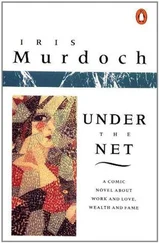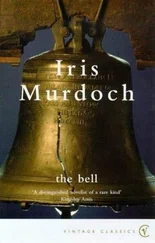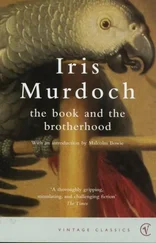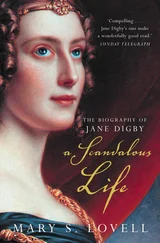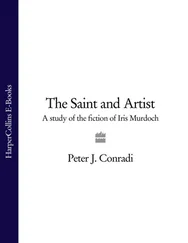Competition, ‘essential to education’, existed in variety. Of teachers she singled out Miss Burdett, who taught the girls Latin from the age of eleven, thereby opening the way to Greek later; and ‘magisterial and warm-hearted’ Miss Bain, the headmistress. There was cricket too, taught by Mr Keegan, wont to call out ‘Stop picking a daisy, sir,’ to some little girl who found the wildflowers more interesting than the cricket ball. Not Iris; she, like her father, 18loved cricket all her life.
The school had been pacifist during the Great War, when instead of the standard version of ‘God Save the King’, this verse was bravely sung:
God bless our native land
May Heaven’s protective hand
Still guard her shore.
May peace her power extend,
Foe be transformed to friend
And Britain’s might depend
On war no more. 19
This suggests republicanism as well as pacifism.
Froebel was certainly a highly original and an engagingly dotty place, ‘modern’ for its time, with a friendly and relaxed discipline and no strong religious bias. Two exact contemporaries remembered Iris vividly. The father of Barbara Denny (née Roberts, and later to write a fictionalised life of Friedrich Froebel 20) had heard that this was the school ‘where the children did nothing but play’. His meeting with the headmistress, Ethel M. Bain, changed his mind. She was a small, frail-looking Scotswoman with considerable strength of character, with neat, spry, sparrowish features, thin but equally neatly moulded lips, greying hair drawn back in properly prim fashion, and a quiet way of talking which was attended to respectfully. Miss Bain would appear to have been both imaginative and sympathetic: a carefully scripted card from her to Iris showing the bunsen burners in the school science room, dated 24 January 1930, reads: ‘I am so sorry that you have got such a horrid cough. Get well as quickly as you can and come back to school. The Irish girl is here. Love from E.M. Bain.’
Many aspects of the school that then seemed ‘modern’ have since become standard: the garden area where each form tended its own flowerbed, the two ponds providing instruction and delight in the form of frogs, newts and tadpoles. Play areas, well stocked with trees and shrubs, contained an ancient wooden summer-house and hutches for rabbits and guinea pigs.
Other aspects now look quaint. A child could choose on his or her birthday a story to be read by Miss Bain – often, in that decade, by A.A. Milne, The first form introduced the children to the strange glories of ‘Knights and Ladies’, entailing remarkable dressings-up and an ‘omnipresent form of chivalry that was more than a game’, probably Miss Bain’s inspiration, since it departed with her in 1933. It was an imaginative version of the house and prefect system used in more conventional schools. The boys and girls in the top form – known as Squires and Dames – each had a household of about ten younger children down the school to whom they acted as mother – or father-figure in both work and play. A Dame sewed her banner – becoming a Dame preceded being dubbed a ‘Lady’ – with an appropriate device; her Squire built himself a shield in the woodwork class. *At least once a term the whole school would assemble at the ‘King’s Court’ in the larger College Hall, the Dames and Squires in two lines, their households lined up behind them in order of age. King Bain would enter, walking down the aisle in a velvet cloak and cardboard crown, the boys bowing and the girls curtseying. The Old Froebelian’s News Letter of 1934 recalled the scene: ‘Oyez! Oyez!! Know ye that this day … the King holds high revel and would welcome all his Court, Knights and Ladies, Squires and Dames, Pages (&tc …) to a joust and a feast. Thus ran the message and right merrily did the Lands assent thereto.' *King Bain would first address the assembly on some important matter. Courtesy was a strong point:
Of Courtesy … it is much less
Than courage of heart, or holiness
But in my walks, it seems to me
That the grace of God is in courtesy
(Hilaire Belloc)
At this point jousting with King Bain, that tiny, frail and grey-haired little lady, began. Barbara Denny remembered her challenging her squires to battle with quarterstaffs of rolled-up brown paper. Miriam Allott recalls a wooden sword. Might the wooden sword have belonged to King Bain, while the squires jousted with mere rolled-up brown paper? A discourteous thought. †In any case, King Bain would fight with one or other of the squires or knights in turn, jousting with him up and down the hall between the ranks of the households, and signifying when a bout was to end. For this she wore, besides a copper-coloured crown, a knee-length blue tunic and grey stockings, not wool but the fine lisle or faux-silk common at that time.
Once a year at Christmas there was a special occasion described by Miss Bain as a ‘coloured picture’. The children dressed up in party clothes with veils for the girls, paper helmets and silver-painted dishcloth or possibly papier-mâché armour for the boys. Staff wore tights and tunics, velvet hats or wimples and medieval gowns, with various badge devices for the few male teachers. Miss Short, wearing a wimple, one year sang ‘I’m off with the raggletaggle gypsies, oh’.
As well as special dressing-up, this was also a time for special recognition. It was a rare honour on such a day to be ‘dubbed’ a knight or lady. The chosen person would kneel before King Bain, a boy to be dubbed with the sword, a girl to receive a tall wimple with a muslin veil, and the gift of a roll of bread (for sustenance) and a bunch of violets (for beauty and gentleness). Barbara Denny found the occasion one of the most moving of her young life, and Miss Bain would address her in letters for the next fifty or so years (she lived well into her nineties) as ‘My Lady Barbara’. Denny recalled Iris being made a lady and receiving her bouquet. Highlight of the banquet was a Boar’s Head made by the local bakery – Hamilton’s – chocolate-iced sponge with a lemon in its mouth, and banana tusks. This was borne in on a tray held high by four members of staff dressed as ‘pages’, to the singing of the medieval carol:
The Boar’s Head in hand bear I,
Bedecked with mace and rosemary.
I pray ye my masters be merrie …
Caput apri defero ridens Laudis Domino. *
On one such splendid Christmas occasion, with King Bain presiding in androgynous style, young Miriam Allott overheard her father murmur sotto voce to her mother, ‘ We shall have to take that girl away …’
Around 1927 two inspired teachers, Miss Dorothy Coates and Miss Joan Armitage (rather handsome, dark straight hair drawn back into the customary plaited bun, no make-up, simple straight Liberty dresses, a ‘cared-for Pond’s cold cream look, et c’est tout’ 21), introduced the school to Hiawatha and Red Indians. Chief Oskenonton, star of the Hiawatha performances then acted by large casts at the Albert Hall, was heralded by Miss Armitage, standing with folded arms and impassive expression, a squaw’s headband with its tall feather at the back of her hopsack tunic. The Chief had come to visit his young brother – and sister-braves at Froebel. Miss Armitage joined in the Indian chant he taught, one hand rising and falling with the rhythm: ‘Wah kon dah di doo/Wah kon din ah tonnee’. 22Pupils made beaded and feathered head-dresses, mothers sewed up cotton tunics and trousers, wampum, moccasins and peace-pipes were improvised. A powwow took place in the long grass in Kew Gardens, the girls following Miss Armitage’s tunic-covered rear as they tracked her through the long grass on hands and knees. Miriam Allott does not think her father would have been reassured.
Читать дальше

